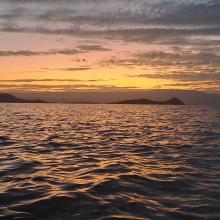
Lake Baringo
- Country:Kenya
- Site number:1159
- Area:31,469 ha
- Designation date:10-01-2002
- Coordinates:00°36'N 36°04'E
Materials presented on this website, particularly maps and territorial information, are as-is and as-available based on available data and do not imply the expression of any opinion whatsoever on the part of the Secretariat of the Ramsar Convention concerning the legal status of any country, territory, city or area, or of its authorities, or concerning the delimitation of its frontiers or boundaries.
Overview
Lake Baringo is a freshwater lake located in the eastern arm of the Great Rift Valley. Several seasonal rivers drain into the Lake, and others which are perennial but with significantly reduced flows during the dry season. The Lake provides critical habitat and refuge for nearly 500 species of birds including some migratory waterbirds. It is also an invaluable habitat for seven freshwater fish species, including the tilapia Oreochromis niloticus baringoensis, which is endemic to the lake. In addition, the Site provides habitat for a wide range of mammals, amphibians, reptiles and invertebrate communities including hippopotamus (Hippopotamus amphibius) and Nile crocodile (Crocodylus niloticus). The Site is important to local communities as a source of water for domestic use and livestock. Four ethnic communities around the lake depend on it for food, fishing and water supply, and a variety of traditional religious functions are served by the Lake and its surrounding escarpments. Long-term overgrazing and deforestation and the diversion of water from one of the inflowing rivers for irrigation are seen as potential pressures, as are alien invasive species such as Nile cabbage (Pistia stratiotes). The Site has a visitor centre, and a management plan was being prepared as of 2024.
Administrative region:
Baringo County
- Global international designation:
- Other global designation
- National legal designation:
- National Reserve - Lake Baringo National Reserve
- Last publication date:28-05-2024
Downloads
Ramsar Information Sheet (RIS)
Archived RIS
Additional reports and documents
- Taxonomic lists of plant and animal species occurring in the site
- Other published literature
